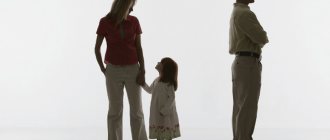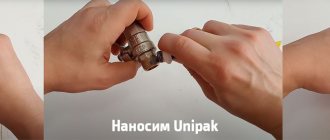Accidents often occur that do not always fit into existing accident patterns. One such case is car damage caused by opening a door. Depending on the situation, they are interpreted differently and require different paperwork. Sometimes it is necessary to draw up a European protocol or call the traffic police crew to the scene. In other cases, you have to settle for a more complex procedure for registering damage with the participation of a local police officer. What is the right thing to do?
Questions and Answers How to file accidents on a bike path with unicycles and scooters?
When opening the door, there was an impact: is this considered an accident?
To answer this question, we need to remember the basic concepts from the traffic rules. First of all, let's remember the definition of traffic:
Road traffic is a set of social relations that arise in the process of moving people and goods with or without vehicles within the boundaries of roads.
In our case, the open vehicle door will be to blame. This means that road traffic was carried out using a car. This is understandable. Let's move on to the definition of an accident.
A road traffic accident is an event that occurred during the movement of a vehicle on the road and with its participation, in which people were killed or injured, vehicles, structures, cargo were damaged, or other material damage was caused.
In the situation under consideration, it will be important at what exact moment the car door opened. That is, whether the car was involved in the process of driving on the road.
At the same time, one should take into account the position of the courts, including the Supreme Court of the Russian Federation, that boarding and disembarking passengers or the driver himself in a car is part of the process of moving the vehicle. Therefore, in most cases, if damage is caused to property or other road users, it will be classified as an accident.
But the question of who violated what and who is to blame for such an accident remains open.
How to file a claim for car damage?
A claim for damage to a vehicle is made in free form. The following information should be included in the claim:
- indicate the addressee to whom the claim is sent, i.e. for an individual, full name and address, for a legal entity - name and address
- indicate from whom the claim is being sent , i.e. your name, address and telephone number for contact
- name the document - claim
- in the text of the claim, reflect the circumstances under which the damage to the car was discovered, i.e. when, at what time, where, what exactly was damaged in the car, what is the cost of restoration or what damage was caused, how was the amount of damage determined
- in the text it would not be superfluous to make references to specific rules of law justifying the legality of the applicant’s demands: 15, 1064 of the Civil Code of the Russian Federation
- In the pleading part of the claim, indicate your specific requirements , i.e. compensate for damage and/or other claims
- if necessary , attach copies of documents to the claim , for example, photos and indicate them in the list of attachments
- at the end put the date of signing the claim, signature and transcript of the signature
The claim can be written by hand, but then it is necessary to write in several copies so that one copy of the claim remains in your hands. It will be easier to prepare the claim in printed form and print out several copies.
USEFUL : For more instructions on how to file a claim, see the video and the link on our website
Who is at fault in a car door opening accident?
Practice shows that the issue of determining guilt in an accident with an open door is not so clear-cut. In 2021, you can find three different options for the distribution and determination of guilt in such an accident, namely:
- the passenger who opened the car door is at fault,
- the driver whose car door was opened is at fault,
- Both the driver and the passenger of this car are at fault.
To understand why this happens, let’s remember the basic rules and responsibilities of both the driver and the passenger when boarding/disembarking.
So let's get started!
- Passengers: are required to board and disembark from the curb or sidewalk only. In this case, the car must come to a complete stop, so they are prohibited from opening the vehicle doors while driving (clauses 5.1 and 5.2 of the traffic rules).
- The driver: is obliged to board and disembark after the car has completely stopped, and driving can only begin when all doors are closed (clause 22.7 of the Rules).
The most attentive people probably already think that not a word is said here about how to open the doors when the car is already parked. This is discussed in a separate paragraph, but it cannot be attributed to the responsibilities of either the driver or the passenger, it is general.
The most important point of the traffic rules for us: it is prohibited to interfere with other road users with open doors (clause 12.7 of the Rules).
So it turns out that the driver must monitor the passengers, and the passengers themselves must act without violating the Traffic Rules. Hence the controversial judicial practice in determining who is at fault in an accident with an open car door.
Situation No. 1: A passenger opened the door and another car drove into it: who is to blame?
To begin with, let us immediately determine that this is not the case when the fault of the driver who entered can be considered.
Only the passenger and the driver of the parked car will have to prove their innocence. As mentioned above, a violation can be detected in both the passenger and the driver. At the same time, they will be charged with different points of traffic rules.
Some inspectors charge passengers under Part 1 of Article 12.29 of the Code of Administrative Offenses of the Russian Federation (punishment: warning or 500 rubles). In my opinion, prosecution under this article is incorrect, since there was an accident, and, therefore, interference was created for the movement of other cars. In this case, there is another standard of responsibility, namely part 1 of Article 12.30 of the Code of Administrative Offenses of the Russian Federation (sanction: fine of 1000 rubles).
Drivers, as a rule, are charged under Part 4 or 6 of Article 12.19 of the Code of Administrative Offenses of the Russian Federation for violating the rules of stopping or parking, and the traffic rule they violated is indicated in 12.7.
But bringing, for example, a passenger to administrative responsibility does not guarantee that the driver will remain innocent. In 2021, judicial practice mainly follows the path of placing blame and responsibility on the driver of the vehicle, even when there is an “admin panel” for the passenger. The fact is that the driver is not a simple road user, but the owner of a source of increased danger, hence the “increased” responsibility for everything that happens to the car.
If you find yourself in such an accident on the side of a stationary car from which a passenger was getting out, opening the door, then there is a small probability of a successful outcome for you if you raise the issue of the driver of the moving car violating the required lateral interval (clause 9.10 of the traffic rules).
There is no definition of lateral interval anywhere. However, there is a methodological calculation in forensic technical examination. According to this methodological information, when driving around an obstacle, the required value of the lateral interval is calculated using the following formula:
D = 0.35 + 0.005×V1
Where V1 is the speed of the passing car. For example, with a value of V1 - 40 km/h, the safe lateral interval will be calculated according to the formula: 0.35 + 0.005 × 40, that is, it will be equal to 0.55 meters or 55 centimeters, which is quite enough to add the distance to the width of a standing car plus an open door.
But the main thing here is to try to convince the judge that if the driver of the leading car had observed a safe interval, he could have avoided an accident even if the door of a stationary car suddenly opened, without anticipating such an action by the driver or passenger. This, unfortunately, will not always be possible, since the judge’s question should be whose violation was in a more direct cause-and-effect relationship with the incident.
Is it necessary to call the traffic police crew?
No, unless the situation requires the presence of the traffic police.
The police are needed in all cases when you find damage to a parked car, but the culprit fled the scene of the accident without permission. To register the event, you will have to call the traffic police crew. Of course, if you want to recover damages and don’t give up on minor scratches.
But if the other driver waited for you and does not deny his guilt, you can do without the participation of authorized traffic police officers. Both parties - the victim and the culprit - must draw up a notification about the accident. In common parlance it is called the Europrotocol.
Rules for drawing up a European protocol
Registration of an accident using a European protocol is a simplified procedure for recording an incident on the road. It appeared in 2009, and is now an alternative for event design by the interested parties themselves.
However, the simplified procedure for recording an accident is not suitable in every situation. In 2021, all conditions must be met simultaneously:
- Collision between two vehicles.
- No harm to the health of people, including those involved in the incident (abrasions on the knees and a broken nose already require calling the traffic police).
- Both drivers have compulsory motor liability insurance.
- The amount of damage does not exceed 100 thousand rubles - for the usual issuance of a notification about an accident, or up to 400 thousand rubles - when issuing a notification and photo through the mobile application "OSAGO Assistant".
If all four points are met, participants in the incident can fill out an accident notification form in paper or electronic form. One copy will remain with you, as the injured party, and the second will be taken by the culprit. Based on the notification of the accident, the insurance company will compensate for the damage to the car.
Situation #2: Hit by a door in the parking lot
Under this formulation of the situation, many different situations can be selected in which different participants may be found guilty. Let's give examples.
- One car has been parked in the parking lot for a long time without a driver, the second has just arrived. And the driver of the second car hits the neighboring car with the door.
- In the second example, the situation is the same, but it is the passenger who damages someone else’s car with the door.
- Both cars have been parked for a long time, and at the moment when one of them is being boarded, someone hits the open door.
- The cars are parked, but no one is going to get into them, but opened the door to put something in or pick it up.
- The open door of one car does not touch the second, but in the second car someone also opens theirs and hits someone else's car.
These are not all the options, you can also think of a strong wind, and some passers-by... But in general, the practice of apportioning the culprits here very much depends on the specific circumstances and factors in which the accident occurred - who is at all times in the parking lot with their car.
In all these situations, the perpetrators will need to be identified depending on their responsibilities and the circumstances of the incident. Blame can be placed on both the passenger and the driver; unfortunately, there is no universal formula here.
In some cases, this will be considered a traffic accident. For example, when one of the cars just arrived. In others, talking about a traffic accident can be a stretch... If it can be proven that the participants in the incident got into the car and were about to leave, and this is an action that collectively relates to road traffic. Otherwise, it's just a traffic incident that caused some damage.
Is CASCO valid?
In the case of CASCO, the same principles apply as with OSAGO. A voluntary car insurance policy cannot protect the driver from all risks (contrary to the promises of many insurance agents who are trying to sell the policy faster).
The vehicle will be insured only against those risks that are specified in the CASCO agreement. The most frequently indicated are the following:
- Road accident.
- Fire.
- Arson.
Please note : Fire and arson are two different things. A fire is a situation where, for example, a garage in which a car was parked caught fire. Arson is when a vehicle is deliberately set on fire (usually such situations do not occur without police intervention). - Hijacking.
- Damage due to natural disasters or falling foreign objects.
- Damage from the actions of third parties.
Thus, if the incident in the parking lot does not fall under the concept of an accident, then compensation under CASCO will be paid only if the corresponding clause is specified in the contract.
Situation No. 3: A car drove into an open door for a long time
On the one hand, the situation is simple, but we must not forget what a wonderful country we live in. Not every driver will be decent and say that yes, he did not notice the open door and drove into it. In most cases, you will have to prove that the door was open a long time ago and did not interfere with the movement of other vehicles.
And here, as in all our other articles, let us remind you of the importance of a DVR in a car. If you decide to get one after such an accident (we really hope you have), then external surveillance cameras can help, which are better to find immediately after the incident yourself and ask the owners to save the recording, and then petition the traffic police to include it in the case file.
If it cannot be proven, then with a high degree of probability the driver whose door was open will be found guilty.
Important note!
- This article describes the basic principles of how legislation works. Meanwhile, in judicial practice everything depends on specific circumstances.
- In 96% of all cases there are subtleties that can affect the outcome of the entire case.
- Therefore, we recommend entrusting the matter to professionals who will study your business and select the right winning strategy.
The TonkostiDTP website employs professional road accident lawyers with experience in all major types of disputes (MTPL, guilt, administrative penalties).
Ask a lawyer
or get a free consultation by calling the hotline: 8.
Traffic police do not want to go to the scene of the accident - what to do?
Very often, in response to a request to come to register an accident, drivers hear from the traffic police officer on duty a counter-request - to register the incident without the police, using the European protocol. This proposal is fully consistent with the requirements of paragraph 284 of the Administrative Regulations of the Ministry of Internal Affairs. But this is not a requirement!
What to do? You can inform the duty officer that you do not have any writing utensils or paper with you to fill out an accident report. Insist that a traffic police crew go to the scene of the accident. However, the police can travel quite a long time. Sometimes even half a day if it happens in a large city. And here, alas, there is nothing to be done. All that remains is to wait for the crew to arrive.
It’s worth mentioning one more subtlety that not all drivers know about. Having learned that snow has fallen on your car, a tree has fallen, or someone has broken your side window with a stone, the traffic police officer on duty will redirect you to the police department - and he will be right. Incidents with damage not caused by another vehicle are registered by the district police officer, not by traffic police officers. And you need to call 020 or immediately call the local detective.
Situation No. 4: If a cyclist enters
When a door is knocked down by another car, serious damage can, of course, be caused, but, as a rule, only to the hardware.
In the situation with small-wheeled road users, everything is more complicated. Whether it's a cyclist, someone on a scooter, an e-scooter, or roller skates, or even a pedestrian, they can all suffer significant injuries when they run into an open door. And if it’s a child, then even more so.
In this case, liability for the above violations of the driver or passenger of the car will be stricter, and punishment will await under Articles 12.24 of the Code of Administrative Offenses of the Russian Federation or 264 of the Criminal Code of the Russian Federation. In addition, the perpetrators will receive compensation for damage to the health of the cyclist or other road users.
If the driver of the vehicle is found guilty, then the insurance company will mainly pay for him under compulsory motor liability insurance, and if only the passenger, then pay him everything out of his own pocket. It is important to remember that in case of harm to health, the victims will also be able to demand moral damages, which can amount to 100, 200, or even 500,000 rubles.
In a situation where the cyclist can be blamed for a collision with an open car door, the driver will still have to pay compensation for the damage. This is because he is in possession of a source of increased danger and his guilt is presumed. But he will be able to repair the door at the expense of the cyclist, since the latter is directly to blame for the accident itself. An exception is a motorcycle that crashes through the door - in this case, the motorcyclist is also the owner of the private property company, so compensation for damage is made on a general basis.
Who is responsible for damage to a car in the yard?
Who is responsible if your car is damaged will depend on how your car was damaged.
If damage to a car is caused by hitting another car or opening a car door, then the person who caused damage to another car with his car will be liable.
In the event of harm caused by a person who, for example, scratched the car with equipment when passing by, naturally this person will be responsible to the owner of the damaged car.
When damage to a car is caused due to the actions of a child who, for example, threw a stone at the car, the parents or organizations in which the child is located will be responsible for the child, provided that the child is under 14 years of age. If the child has reached 14 years of age, then, as a general rule, the minor will be held accountable for the damage he caused to the car.
When damage to a car was not caused by human actions, but, for example, snow fell on the car from the roof of a house, or a tree branch fell, then in this case the legal entity will be responsible, namely, the management company will be responsible for the fallen snow, and rather, for the tree everything, administration. In such situations, it will be necessary to clarify who is responsible for removing snow or looking after trees. In some cases, the culprit is the owner of the building.
What to do in case of an accident with the door open?
In case of an accident with a car door, as in any other type of accident, first of all, you need to comply with the requirements of the Traffic Rules for this case, which are set out in paragraphs 2.5, 2.6 and 2.6.1.
Here are the main ones:
- turn on the emergency lights, put up an emergency stop sign;
- do not move the machine;
- do not move or remove any fragments or parts;
- Call an ambulance, if there are victims, or the police.
Depending on the situation, if you have time and opportunity, take photographs of the scene of the accident, the location of the vehicle, bicycle and any other objects. Record on photo and video the connection of vehicles to stationary objects.
Next, or during the process of photographing, take care of searching for witnesses to the accident. If there is a DVR recording, save it. Perhaps eyewitnesses or other participants in the incident will have the video.
If not, then pay attention to street cameras, which could record everything that happened at the moment of hitting the open door.
Everything that you manage to collect and that will prove your innocence must be indicated in the documents of the traffic police, let them attach the records or request them from the owners of the video cameras.
Be sure to make sure that the inspectors measure everything correctly and indicate it in the accident diagram. In case of any inaccuracies, indicate your comments and do not write that you agree with the diagram, it is better to simply indicate that you are familiar with it. It is better to photograph the diagram and all compiled documents so that you have copies.
If you do everything correctly, then in the future it will help you or your lawyer (defender) to prove your innocence.







